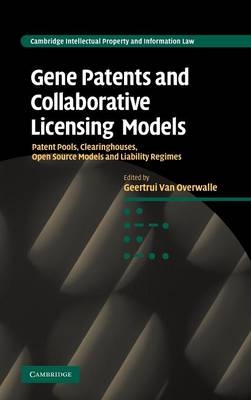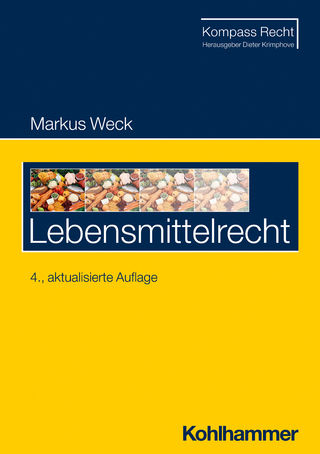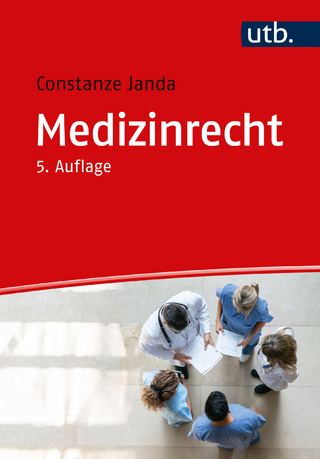
Gene Patents and Collaborative Licensing Models
Cambridge University Press (Verlag)
978-0-521-89673-3 (ISBN)
Concerns have been expressed that gene patents might result in restricted access to research and health care. The exponential growth of patents claiming human DNA sequences might result in patent thickets, royalty stacking and, ultimately, a 'tragedy of the anti-commons' in genetics. The essays in this book explore models designed to render patented genetic inventions accessible for further use in research, diagnosis or treatment. The models include patent pools, clearing house mechanisms, open source structures and liability regimes. They are analysed by scholars and practitioners in genetics, law, economics and philosophy. The volume looks beyond theoretical and scholarly analysis by conducting empirical investigation of existing examples of collaborative licensing models. Those models are examined from a theoretical perspective and tested in a set of operational cases. This combined approach is unique in its kind and prompts well founded and realistic solutions to problems in the current gene patent landscape.
Geertrui van Overwalle is head of the Patent Law Research Group at the Centre for Intellectual Property Rights at the Katholieke Universiteit Leuven. She also teaches Intellectual Property Law and Patent Law at the Katholieke Universiteit Leuven and the University of Liège.
Part I. Patent Pools: 1. Patent pooling for gene-based diagnostic testing: conceptual framework Birgit Verbeure; 2. Case 1. The MPEG LA® licensing model. What problem does it solve in biopharma and genetics? Lawrence A. Horn; 3. Case 2. IP fragmentation and patent pools: the SARS case Carmen E. Correa; 4. Critical analysis of patent pools Jorge A. Goldstein; Part II. Clearing Houses: 5. Clearinghouse mechanisms in genetic diagnostics: conceptual framework Esther van Zimmeren; 6. Case 3. The global biodiversity information facility. An example of an information clearinghouse James L. Edwards; 7. Case 4. BirchBob: an example of a technology exchange clearing house Esther van Zimmeren and Dirk Avau; 8. Case 5. The public intellectual property resource for agriculture. A standard license public sector clearinghouse for agricultural IP Alan B. Bennett and Sara Boettiger; 9. Case 6. The science commons material transfer agreement project. A standard license clearing house? Thinh Nguyen; 10. Case 7. The collective management of copyright and neighbouring rights. An example of a royalty collection clearing house Jan Corbet; 11. Comment on the conceptual framework for a clearing house mechanism Michael Spence; Part III. Open Source: 12. Open source genetics: a conceptual framework Janet Hope; 13. Case 8. CAMBIA's biological open source initiative (BiOS) Nele Berthels; 14. Case 9. Diversity Arrays Technology Pty Ltd.: applying the open source philosophy in agriculture Andrzej Kilian; 15. Critical commentary on 'open source' in the life sciences Arti K. Rai; 16. Several kinds of 'should': the ethics of open source in life sciences innovation Antony Taubman; Part IV. Liability Regimes: 17. Pathways across the valley of death: novel intellectual property strategies for accelerated drug discovery Arti K. Rai, Jerome H. Reichman, Paul F. Uhlir and Colin Crossman; 18. Case 10. The international treaty on plant genetic resources for food and agriculture: the standard material transfer agreement as implementation of a limited compensatory liability regime Victoria Henson-Apollonio; 19. Critical analysis of property rules, liability rules and molecular futures: bargaining in the shadow of the cathedral Dan L. Burk; Part V. Different Perspectives: 20. Gene patents: from discovery to invention. A geneticist's view Gert Matthijs and Gert-Jan Van Ommen; 21. 'Patent Tsunami' in the field of genetic diagnostics. A patent practitioner's view Jacques Warcoin; 22. Gene patents and clearing models. Some comments from a competition law perspective Hanns Ullrich; 23. Access to genetic patents and clearinghouse model. An economic perspective Reiko Aoki; 24. The role of law, institutions and governance in facilitating access to the scientific research commons. A philosopher's perspective Tom Dedeurwaerdere; Part VI. Concluding Thoughts: 25. Of thickets, blocks and gaps: designing tools to resolve obstacles in the gene patents landscape Geertrui van Overwalle.
| Erscheint lt. Verlag | 11.6.2009 |
|---|---|
| Reihe/Serie | Cambridge Intellectual Property and Information Law |
| Verlagsort | Cambridge |
| Sprache | englisch |
| Maße | 155 x 235 mm |
| Gewicht | 940 g |
| Themenwelt | Recht / Steuern ► EU / Internationales Recht |
| Recht / Steuern ► Privatrecht / Bürgerliches Recht ► Medizinrecht | |
| Recht / Steuern ► Wirtschaftsrecht ► Urheberrecht | |
| ISBN-10 | 0-521-89673-8 / 0521896738 |
| ISBN-13 | 978-0-521-89673-3 / 9780521896733 |
| Zustand | Neuware |
| Haben Sie eine Frage zum Produkt? |
aus dem Bereich


